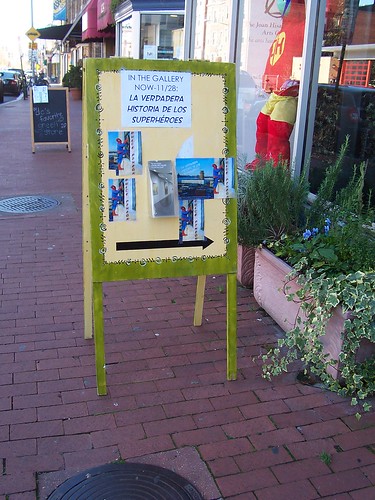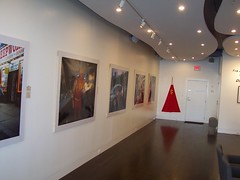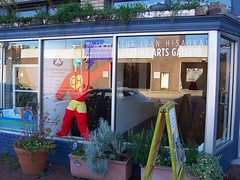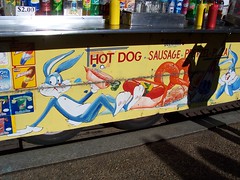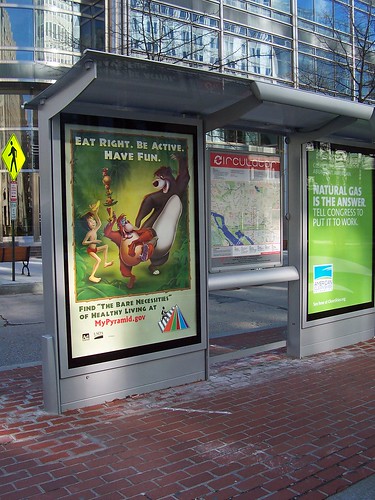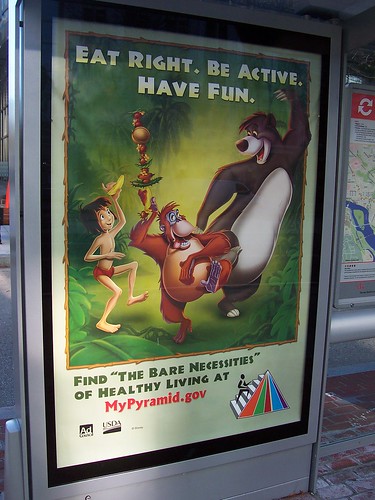
Friday, January 01, 2010
Comics on the Rack (Quick Picks for Comics Due 01-06-10) by John Judy
COMICS ON THE RACK
Thursday, December 31, 2009
Spider-Man fan film continues
NPR's Weldon's year in review
Michigan State U's Comic Art Collection's year in review
The fund-raising Interplanetary Journal of Comic Art is still available. Proceeds support IJOCA. And it's funny.
Comicsgirl interviews with Jo Chen, Laura Martin and Tonya Kay
Five questions with Tonya Kay, Monday, 19 October 2009 - with 'superhero' reality show star.
Five questions with Laura Martin, Thursday, 8 October 2009 - with one of the best colorists in the business.
Five questions with Jo Chen, Thursday, 1 October 2009 - with our local comics cover painter.
Comicsgirl interviewed DC Ass't editor who's also ... a woman!
Nate Beeler wraps it all up
Wednesday, December 30, 2009
Bill Mauldin and Sunday Funnies US stamps coming in 2010

On my Cartoonphilately blog, you can see more details about Bill Mauldin and Sunday Funnies US stamps coming in 2010

The Real World: D.C. features a cartoonist of sorts
Seth 'Family Guy' MacFarlane interview in Express
The Express cropped the last question which totally changed the tenor of the end of the interview. The last Q&A was:
How did it make you feel?
Like I had no spine.
Toles through the decade feature on Post website
Little Nemo animation entered into Library of Congress Registry
The Library's press release says:
Little Nemo (1911)
This classic work, a mix of live action and animation, was adapted from Winsor McCay’s famed 1905 comic strip "Little Nemo in Slumberland." Its fluidity, graphics and story-telling was light years beyond other films made during that time. A seminal figure in both animation and comic art, McCay profoundly influenced many generations of future animators, including Walt Disney.
This is not the 1990s Japanese animation of course. Speaking of McCay, I had an original of one of his political drawings in my hands this weekend. Hoo-hah!
Another cartoon I'm not familiar with was added as well:
Quasi at the Quackadero (1975)
"Quasi at the Quackadero" has earned the term "unique." Once described as a "mixture of 1930s Van Beuren cartoons and 1960s R. Crumb comics with a dash of Sam Flax," and a descendent of the "Depression-era funny animal cartoon," Sally Cruikshank’s wildly imaginative tale of odd creatures visiting a psychedelic amusement park careens creatively from strange to truly wacky scenes. It became a favorite of the Midnight Movie circuit in the 1970s. Cruikshank later created animation sequences for "Sesame Street," the 1986 film "Ruthless People" and the "Cartoon Land" sequence in the 1983 film "Twilight Zone: The Movie."
Caricaturist David Levine dies, Post runs AP obit
 David Levine, one of the best American caricaturists of the 20th century, has died of complications from prostate cancer. The Post ran an Associated Press obituary (which does note that his work is in the Library of Congress - go here and enter "David Levine" in your search and you'll get 78 hits including this McDonald's illustration). Read the NY Times for more information.
David Levine, one of the best American caricaturists of the 20th century, has died of complications from prostate cancer. The Post ran an Associated Press obituary (which does note that his work is in the Library of Congress - go here and enter "David Levine" in your search and you'll get 78 hits including this McDonald's illustration). Read the NY Times for more information.Michael Cavna had a good piece on Comic Riffs though. The Times is running an appreciation, or rather an appraisal tomorrow too.
Maira Kalman reviewed in Post
Herblock! exhibit review
Herblock! Sara Duke, Martha Kennedy and Cynthia Wayne. Washington, DC: Library of Congress, October 13, 2009-May 1, 2010.
By the terms of Herbert “Herblock” Block’s will, the Library of Congress must mount an exhibit of his work every three years. In spite of Block’s staggering 72-year long professional career and four Pulitzer Prizes, this reviewer begins to feel a bit jaded. Fortunately, this is an excellent exhibition that is well worth seeing and is accompanied by an excellent companion book, Herblock by Haynes Johnson and Harry Katz (New York, Norton, 2009) that also has a cd of 18,000 of Block’s cartoons (produced by Warren Bernard). The occasion for the large scale of these events was Herblock’s 100th birthday.
The exhibit is in a new gallery, created recently from a reading room, and to get to it, one has to walk through a recreation of Thomas Jefferson’s library – a highlight for any book lover. The curators (who are my friends) cleverly chose 82 original drawings that have not bee on display before. These are out of the 14,460 cartoons and 250,000 roughs he left to the library. They also added the twelve books of his cartoons that Block published in his lifetime. These copies, unlike the ones originally added to the Library, have their dustjackets because they are a recent donation to the Prints and Photographs division from the Herb Block Foundation.
The exhibit opens with a précis of who Block was and includes some of his iconic images such as the footsteps leading from the Watergate break-in to Nixon’s White House. “The Approaching Perils” covers his early years. One can see Block’s early typical Midwestern cartoonist style using pen and ink – a style that is unrecognizable to us as Herblock. This style soon gives way to his familiar use of heavy crayon or graphite lines. Some notable works were “Winged Victory” (1938) in which he quoted the sculpture from Samothrace, and “What ‘Peace Now’ Would Mean” (1940) in which he showed Hitler armed with a machine gun and sitting on the globe.
Other sections were “Psychopathic Ward” on the Depression, fascism and World War II, “White is Black, Black is White, Night is Day—“ on the Cold War, “Naughty, Naughty” on McCarthyism, “Everything’s [Not] Okay” on the 1960s, “Here He Comes Now” on Richard Nixon, “It Gets Into Everything” on the 1970s and terrorism, “Joy to the World” on Ronald Reagan, “Closing Years, Contrasting Styles of Leadership” on Clinton and the elder George Bush, and “Classic Cartoons by a Master” to catch anything that might have been missed.
One could easily select favorite drawings from each section – my notebook is full of notations such as “Man’s Reach” (1968) in which he drew, apropos of Apollo 8, a white hand with its finger and thumb meeting to encircle the moon on top of a black layer covering most of the paper. By the end of his life, and thus the end of the exhibit, Block’s ability was slipping somewhat and the images are covered with Avery labels and ink redrawings. “Creationism or Evolution – That’s Up to the States” has Bush’s head reworked and pasted on, but the final image in print would have looked fine.
During the press tour Harry Katz noted that in the future “you’re not going to see cartoons on the wall – newspapers are changing” and “With Herblock missing, we need to get the voice of the cartoonist out there and revitalizing the art form” – two sentiments that most readers of IJOCA (and this blog!) can agree with and hope for the best.
The Real Story of Superheroes exhbit review

I've submitted this for the spring issue of the International Journal of Comic Art, but will share it with my readers here first.
The Real Story of the Superheroes: Photographs by Dulce Pinzón.
Photographer Dulce Pinzón clothed Mexicans working in
Some photographs were disturbing: an image of a young man in a Robin costume standing at night on a city street illuminated by a peepshow sign and a police car is labeled, “Robin. Ernesto Mendez from
Pinzón had a clever conceit, took thoughtful photographs and the exhibit was well worth seeing. The images were for sale in several sizes and prices ranging from US$1250-$2500.
